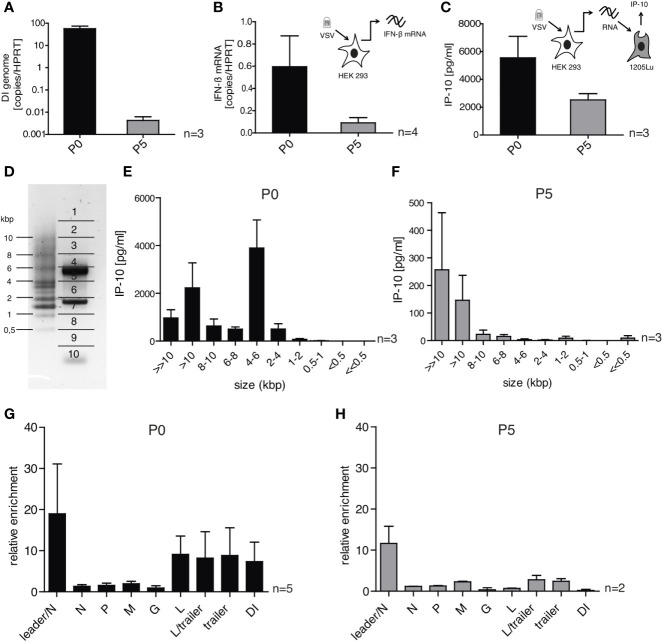Figure 6.
DI-depleted VSV stocks lose most of their immune-stimulating capacity but retain whole genome and leader-N read-through containing RNA sequences as trigger for RIG-I. HEK 293 cells were infected with VSV (MOI =1) using virus stocks containing either high (P0) or low (P5) amounts of DI genomes. 24 h post infection the infected cells were lysed and their RNA was isolated. (A, B) The isolated RNA was transcribed to cDNA and was analyzed by RT-qPCR for (A) the amount of DI genomes and (B) the expression of IFN-β. (C) The isolated RNA was retransfected into 1205Lu cells (100 ng/100 µl) using RNAiMax lipofectamin. IP-10 in the supernatant was measured 24 h after transfection by ELISA. (D) The isolated RNA was subjected to size-dependent separation on an agarose gel and divided into ten slices as indicated. (E, F) The recovered RNA of each slice was used for retransfection into 1205Lu cells and IP-10 in the supernatant was measured 24 h after transfection. (G, H) FLAG-RIG-I immunoprecipitation was performed 24 h post infection with VSV from the P0 or P5 stock in HEK 293 cells either expressing FLAG-RIG-I or not. The co-precipitated RNA was isolated and analyzed by quantitative RT-PCR using gene- and DI-specific primers. Enrichment for each genomic region was calculated as ratio of the relative amount (copies/HPRT reads) in immunoprecipitated RNA of the FLAG-RIG-I-overexpressing cells and the FLAG-RIG-I-lacking cells. Data are represented as mean ± SEM of n=2-5 independent experiments as indicated.

